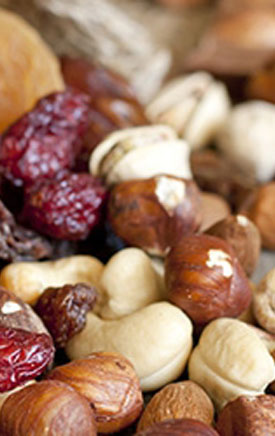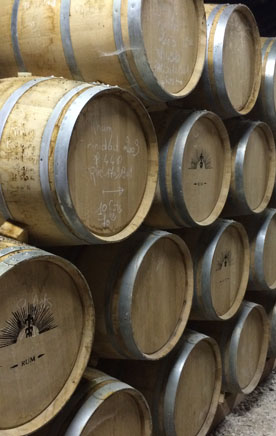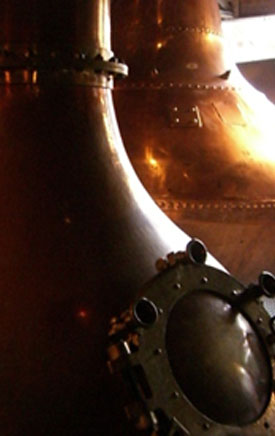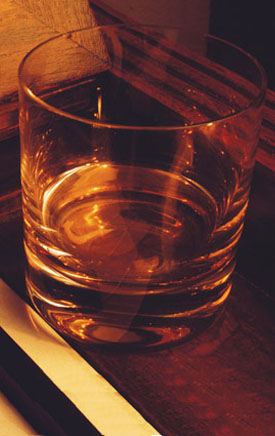- UC Davis
- Best of Friuli
- Questions About Wine
- Chocolate and Wine 101
- Vermont Cheese
- Oregon Wine Country
- Best Chianti Classico
- Best of Cahors
- Wines of the Finger Lakes NY
- Largest Wine List
- Texas Wine
- Champagne
- Puglia Wine and Land
- Best of Playa del Carmen
- Best of Central Coast California - Pt 2
- Best of Central Coast California - Pt 1
- Wine from Virginia
- Bourbon
- Best of Anguilla
- Vodka
- Tequila
- Dessert Wines
- Cognac
- Gin
- Best of Hong Kong & Macau
- Best of Sonoma
- Wines of South Africa
- Beaujolais
- Wines of Sicily
- Wines of Cyprus
- Best Vodka 2004
|
Related Links
|
||
Pilgrimage To the Holy Land
- UC Davis
I know you expect this to be an article about my visit east to Jerusalem or Mecca. My holy land is located 3,000 plus miles west from my home in New York City and it is known as the Department of Viticulture and Enology at the University of California, Davis, located in Davis, California. It is 85 miles from San Francisco Airport to Davis and as I drove I remembered the last time I had been there, when James Guymon ran the spirits program some 35 years ago. I interviewed him for a story in the Les Amis du Vin Magazine. How could I be so sure of the time? I did not remember the exact date until I met Roger B. Boulton, Professor & Chemical Engineer Stephen Scott Endowed Chair in Enology Department of Viticulture and Enology Agricultural and Environmental Sciences- "Thirty five years ago I was hired to replace another retiring professor as well as teach Jim Guymon's classes since he also was retiring." Dr. Boulton studies the chemical and biochemical engineering aspects of winemaking and distilled spirits production. He received both his Bachelor's and PhD in Chemical Engineering from the University of Melbourne, Australia. Even after more than 35 years living here the accent does stand out.
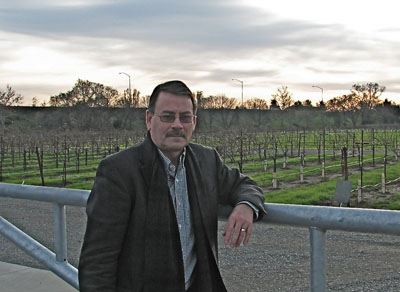
Professor Roger Boulton in front of UC Davis vineyards
Viticulture is the cultivation or culture of grapes and Enology is the science that deals with wine and wine making. I remember meeting Maynard Amarine, Harold Olmo and Ann Noble, people I worshiped as I moved my way up the ladder in this most wondrous of professions. Unfortunately, the first two are no longer with us. But Dr. Boulton sure is and he very generously gave me almost three hours of his time touring me around the beautiful new Robert Mondavi Institute, located behind the Mondavi Center for the Performing Arts. In 2001 the late Robert Mondavi donated $25 million to the university for the establishment of the Robert Mondavi Institute of Wine and Food Science, which opened October 2008. There are three academic buildings that house the Department of Food Science and Technology and the Department of Viticulture and Enology. When people think of MIT they think engineering; Harvard, the law. Davis has graduated more than 2,000 winemaker/owners since it became UC Davis. In the past 30 years they have averaged 55 to 60 graduates per year. Currently the department's 100-plus students are mostly seniors and grad students with some juniors and a few sophomores. Most students enter the major as transfers in their junior year. The department includes 14 faculty members.
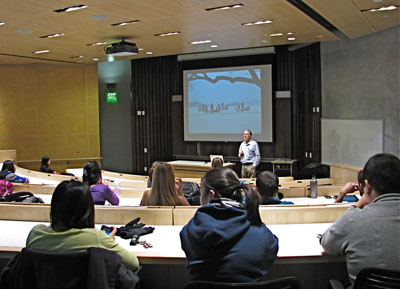
Classroom in Mondavi Institute
The almost complete 8,000-square-foot Jess S. Jackson Sustainable Winery Building will enable the adjacent winery, brewery and food-processing complex to become the first self-sustainable, zero-carbon teaching and research facility in the world. The one-story building was made possible by a $3 million pledge from the late Jess Jackson and his wife, Barbara Banke, proprietor of Jackson Family Wines. In December 2010, UC Davis' Teaching and Research Winery became the first winery in the world to receive LEED platinum certification, the highest rating for environmental design and construction awarded by the U.S. Green Building Council (LEED stands for Leadership in Energy and Environmental Design). Located in the same building, the August A. Busch III Brewing and Food Science Laboratory also became the first such facility to achieve LEED platinum certification.
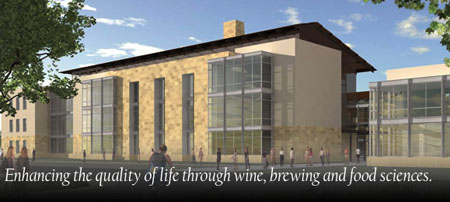
Buildings of the Mondavi Institute at UC Davis
Where did it all start? On April 15, 1880, the California Legislature mandated the Regents of the University of California to establish a program providing for instruction and research in viticulture and enology. The leaders in business and state government at the time realized that California had the potential to become one of the world's foremost wine and grape producing regions. They also recognized the establishment of a premier research and educational institution as a critical ingredient in the recipe for economic success.
Originally located on the UC Berkeley campus, the department was closed in 1919 with the passage of prohibition into law. The current Department of Viticulture and Enology was established on the Davis campus in 1935 following the repeal of Prohibition. Today the Department is unique in combining the sciences of viticulture and enology in a single research and teaching unit that encompasses all of the scientific disciplines that impact grape growing and winemaking.
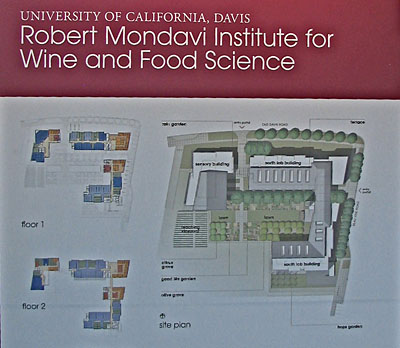
Early research efforts were aimed at making grape growing and wine production economically viable for post-Prohibition agriculturists. Work focused on identifying the appropriate varieties and clones best suited to California growing conditions and on defining vineyard practices that would generate sufficient yield to render grape growing profitable. At the same time the technology to assure the production of sound, defect-free wines was developed. Later research aimed at expanding knowledge of the factors that impact grape and wine characters so that the winemaking processes could be tailored by individual winemakers to achieve the desired flavor and aroma profiles in the finished wine. Objective methods of sensory evaluation of wines were developed in the department that is now widely used throughout the food and beverage industries. Descriptive analysis of wines has now become a standard procedure for wine evaluation and has had the added benefit of making wines less intimidating for the consumer. Marketplace interest in wine has further increased due to research that point to various components in wine that may have beneficial human health effects.
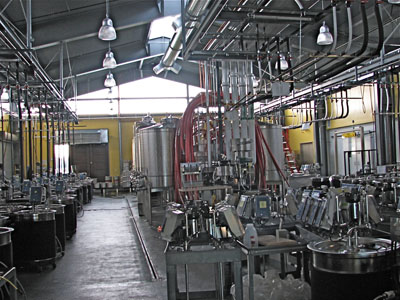
Pilot Winery
The Enology Building and Cellar, built in 1939, serve as the primary hands-on teaching space for the department's students. The Cellar holds over 70,000 bottles of wine and includes wines made by the department as well as wines donated by wineries and private collectors. The Pilot Winery allows the students to learn how to operate commercial-scale winery equipment as well as practice the latest winemaking techniques and procedures. The UC Davis Vineyards provide the students and faculty with 120 acres of high-quality wine grapes and table grapes. There is also an experimental vineyard located in the Oakville area of Napa Valley.
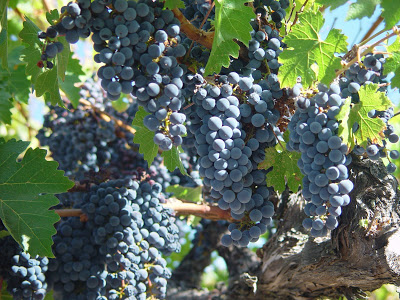
If this all seems complicated all you have to know is California is the leading wine producing state— California's 211.9 million cases held a 61 percent share of the U.S. market. Californians enjoy nearly one in five (18 percent) of the bottles consumed in the United States. If California were a nation, it would be the fourth leading wine-producing country in the world behind France, Italy and Spain. Thank you UC Davis Department of Viticulture and Enology.
For more information:
University of California Davis - Viticulture & Enology
Disclaimer: This section of the website is intended for visitors 21 years of age and older.
If you are not of legal drinking age, please exit by clicking here.
Please drink responsibly!
Comments or questions welcome, please e-mail to: Ron@TheFiftyBest.com
- UC Davis
- Best of Friuli
- Questions About Wine
- Chocolate and Wine 101
- Vermont Cheese
- Oregon Wine Country
- Best Chianti Classico
- Best of Cahors
- Wines of the Finger Lakes NY
- Largest Wine List
- Texas Wine
- Champagne
- Puglia Wine and Land
- Best of Playa del Carmen
- Best of Central Coast California - Pt 2
- Best of Central Coast California - Pt 1
- Wine from Virginia
- Bourbon
- Best of Anguilla
- Vodka
- Tequila
- Dessert Wines
- Cognac
- Gin
- Best of Hong Kong & Macau
- Best of Sonoma
- Wines of South Africa
- Beaujolais
- Wines of Sicily
- Wines of Cyprus
- Best Vodka 2004
|
Related Links
|
||



